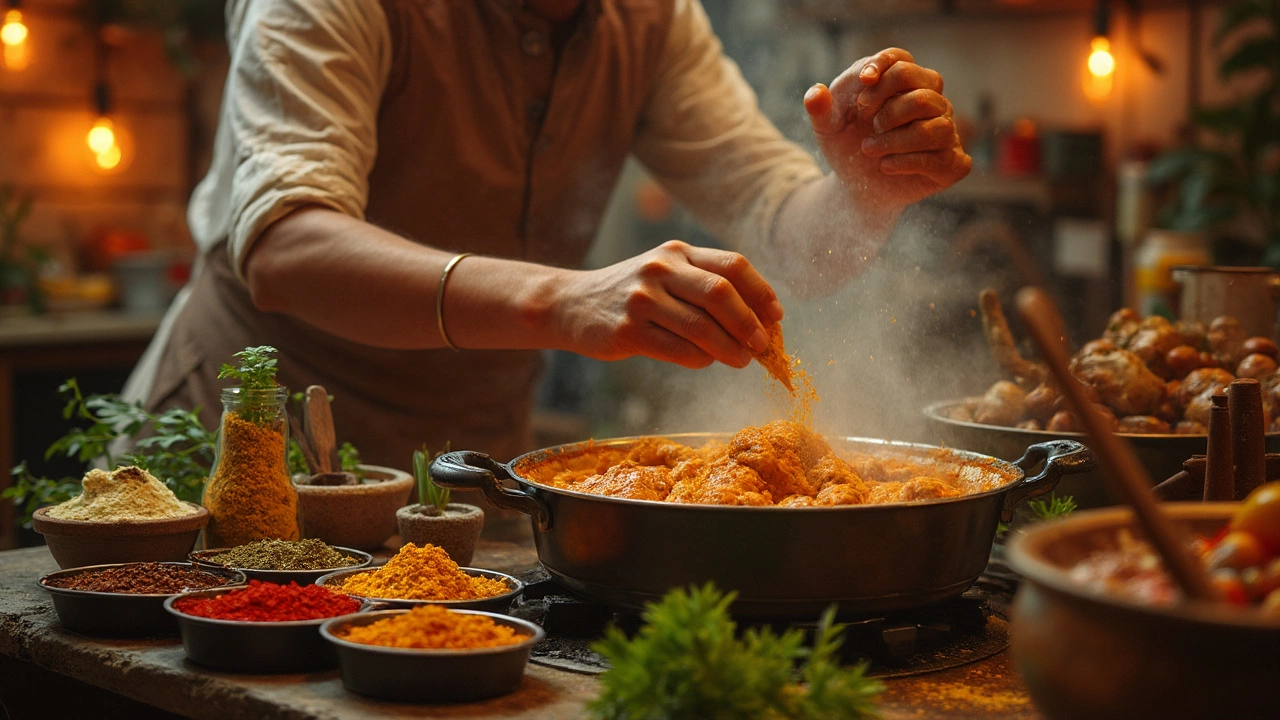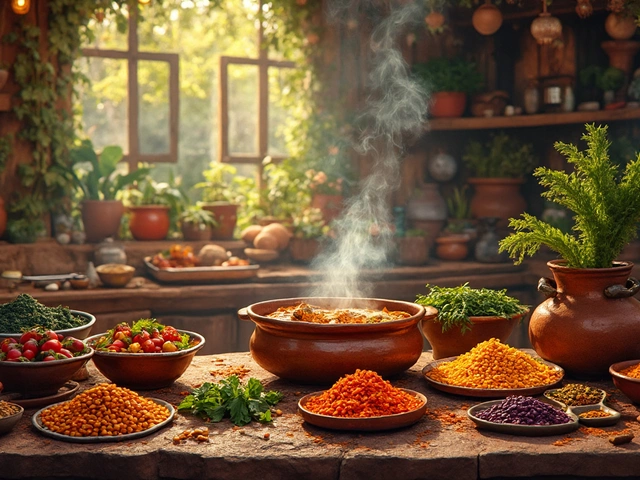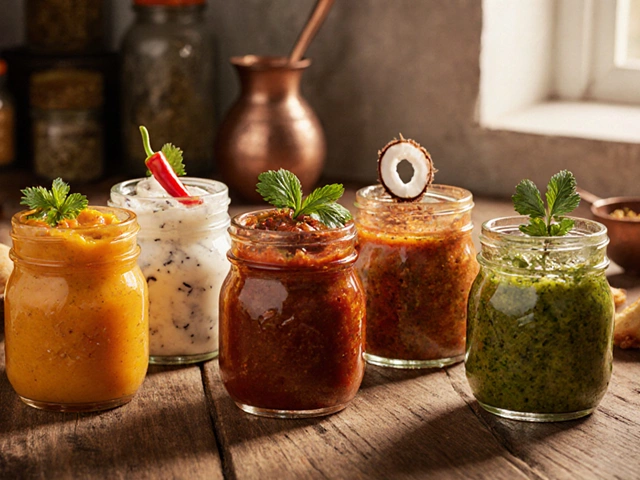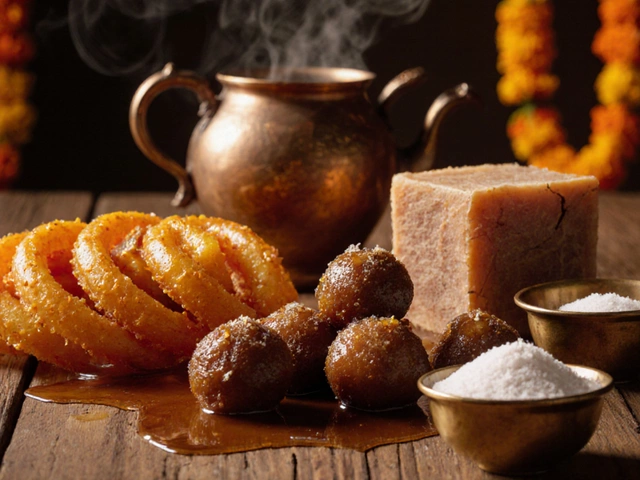Ever had chicken curry that seemed to lack that punch of flavor? You're not alone! A few tweaks here and there can turn a regular curry into a feast for the taste buds. The first step to bringing your curry to life is understanding the power of spices. Think of spices as the heart of your curry—the right combination can make simple ingredients sing.
Another great way to boost flavor is by incorporating herbs. While spices are the backbone, herbs add a fresh twist that's hard to beat. Whether it's a handful of fresh cilantro or a sprinkle of dried fenugreek, these small additions can make a massive impact on your dish.
Don't forget the acidity! Adding a squeeze of lime or a dash of vinegar can brighten up flavors and add depth to your curry. It's amazing how an acidic touch can lift the whole dish, making all the flavors pop.
- The Magic of Spices
- Herb Enhancements
- Acidic Wonders
- Sweet Surprises
- Creamy Additions
- The Element of Balance
The Magic of Spices
Spices are like the secret weapon of a chicken curry. They are what differentiate a bland dish from something truly exciting and memorable. You've probably heard of the usual suspects like cumin and coriander, but the world of spices is vast, and each one brings something special to the table.
Add Some Heat
If you're a fan of a little spice kick, try adding chili powder or cayenne pepper. They won't just add heat but also give your dish a vibrant color. Just be careful with the amount—nobody wants to accidentally burn their mouth!
Earthy and Warm Flavors
Turmeric is another must-have when cooking up chicken curry. Not only does it add a beautiful golden hue, but it's also known for its earthy flavor. It's a spice that has been treasured for centuries, and a tiny pinch can change the entire complexion of your dish.
Next up is garam masala, a blend of spices that's classic in many Indian curries. It's a harmonious mix that typically includes cinnamon, cardamom, cloves, and black pepper. Just a small spoonful will infuse your curry with warmth and complexity.
Unexpected Twists
Looking for something a bit different? Try adding a pinch of star anise for a licorice-like flavor or fennel seeds for a slightly sweet note. These spices might not be conventional, but they can add an intriguing layer to your chicken curry.
Balancing Act
Remember that spices are meant to enhance flavors, not overpower them. It's all about balance. Start with small amounts and adjust as needed. A good rule of thumb is to add spices in stages—this way, you can taste as you go until you hit that sweet spot.
| Spice | Flavor Profile |
|---|---|
| Cumin | Warm and earthy |
| Coriander | Slightly citrusy |
| Turmeric | Earthy and bitter |
| Garam Masala | Sweet and savory |
With these spices in your kitchen, your chicken curry could become a go-to hit in no time. So go ahead, experiment a little, and don't be afraid to make it your own!
Herb Enhancements
When it comes to making your chicken curry stand out, herbs can play a crucial role. They are more than just garnish; they're amplifiers of flavor. If you're looking to add freshness to your curry, you'd be missing out if you skipped this step!
The Essential Herbs for Chicken Curry
Not all herbs are created equal when it comes to curry. Here are some that can take your dish from average to mouth-watering:
- Cilantro: A staple in many curry dishes, cilantro adds a burst of freshness that lightens the dish and balances the hearty flavors.
- Mint: While it may seem unconventional, a touch of mint can add a unique freshness. It's perfect for summer versions of your chicken curry.
- Curry Leaves: These leaves offer a subtle but distinct aroma that can transform your curry. They're often used in South Indian dishes and work wonders in chicken curry.
- Dried Fenugreek Leaves (Kasuri Methi): Known for their slightly bitter and earthy taste, these leaves are often used towards the end of cooking to deepen flavor.
It’s important to add herbs at the right time for maximum flavor. Most herbs are best added towards the end of the cooking process, or as a garnish to retain their fresh flavor.
The Impact of Fresh vs. Dried Herbs
Fresh herbs typically provide vibrant flavor, while dried herbs give a more intense taste. Knowing when to use each can enhance your chicken curry significantly. For instance, dried herbs work well in long-simmering curries as their flavors intensify over time, whereas fresh herbs are great for quick-cooking curries or as a finishing touch.
Add these herbs strategically and you'll notice a significant difference in your culinary creations. They might be small, but they are powerful.
Acidic Wonders
Adding acidity to your chicken curry can be the secret weapon you're looking for. Whether it's a splash of vinegar or a squeeze of lime, these additions do wonders in enhancing flavors. Acids help to balance out the strong spices and richness from the cream or coconut milk, often used in curries.
According to food expert Harold McGee, “Acidic ingredients brighten the flavors and make the dish more complex.”
“Acid is like a finishing touch; it can balance flavors and raise the complexity of taste profiles,” says Harold McGee.
One common acidic ingredient in chicken curry is tomato, often used in the sauce. Tomatoes add not only a tangy flavor but also a bit of sweetness and richness. Lemon and lime juice are also popular choices and can be added just before serving to retain their fresh flavor and zing. Don’t underestimate a splash of vinegar—balsamic or apple cider vinegar can introduce a subtle, unique depth to the dish.
In doing a taste test, you might consider trying different acidic ingredients to see which you prefer. Here's a quick list of options to consider:
- Lemon juice
- Lime juice
- Vinegar (apple cider or balsamic)
- Yogurt or buttermilk (adds creaminess and tang)
- Tomato paste or fresh tomatoes
Start with small amounts; a teaspoon of lemon juice or vinegar can surprisingly transform your curry. Remember, it's always easier to add more than to take excess out, so add gradually.
For those curious about the real impact of acids in your dish, here's a simple breakdown of how much acidity typical components add:
| Ingredient | Acid Content |
|---|---|
| Lemon juice | 5-6% |
| Lime juice | 6-7% |
| Tomato | 4.6% to 5.2% |
| Vinegar | 5% |
Explore these options to find your curry's perfect fit. The adventure in taste is endless!
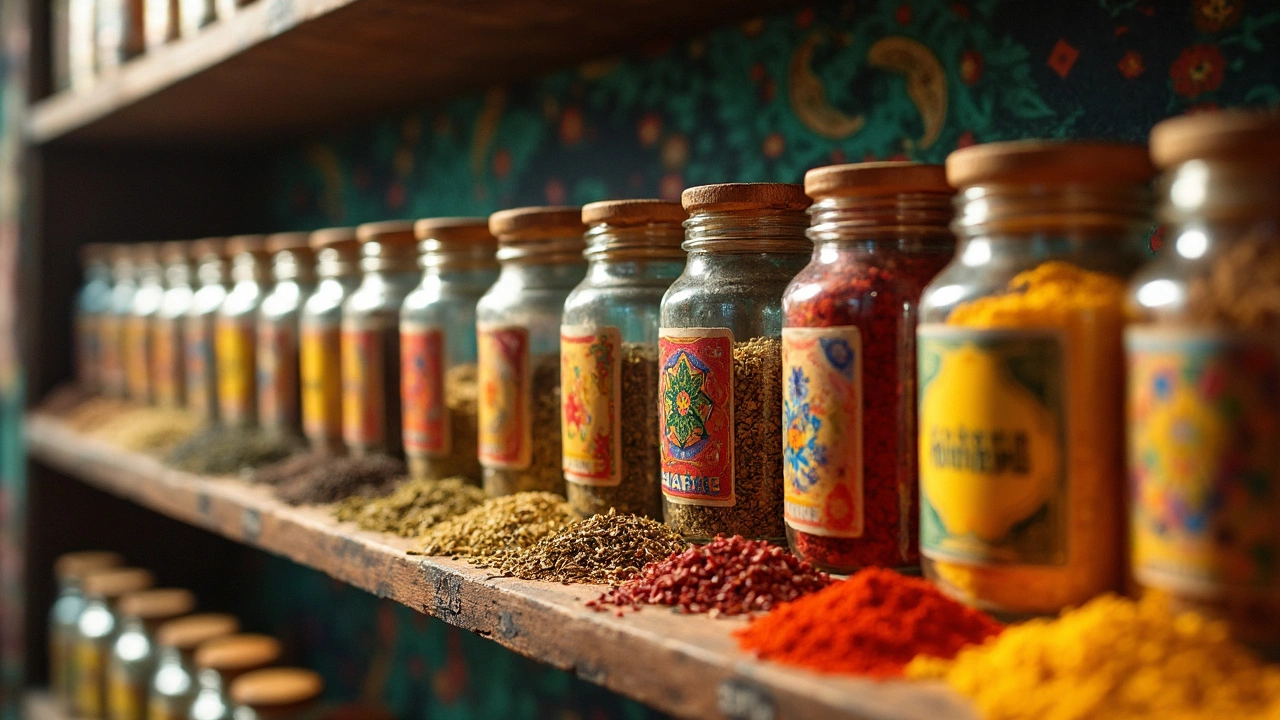
Sweet Surprises
Adding a touch of sweetness to your chicken curry can completely transform it, giving it a depth of flavor that's both unexpected and delightful. It's like the secret ingredient you never knew you needed!
One simple way to do this is by introducing fruits like mango or raisins. They bring a natural sweetness that pairs beautifully with the heat of the curry spices. Just toss in a handful of raisins or some ripe mango cubes while it's cooking to let those flavors meld together.
Honey and Sugar Additions
For those who love a bit of an experimental edge, a drizzle of honey or a spoonful of brown sugar can work wonders. These additions can help balance out the spiciness while enhancing the aroma and creating a rich, complex taste profile.
Coconut milk or cream is another fantastic way to add sweetness, and it also brings creaminess, making your curry extra luscious.
Sweet Ingredients with Flair
- Caramelized onions: Their natural sweetness is amplified when caramelized, providing a rich, sweet undertone to the curry.
- Pineapple: Not only does it add sweetness, but it also offers a refreshing contrast to the spicy elements.
Did you know? According to some culinary experts, about 30% of people prefer a hint of sweetness in their curries to balance the spices. Playing with these sweet surprises might just make your dish a winner at the dinner table!
Creamy Additions
If you want to give your chicken curry a rich and luxurious texture, creamy additions are where the magic happens. From making the dish taste indulgently smooth to balancing out the heat from spices, adding a creamy element can transform your meal entirely.
Cream Boosters
The simplest way to create a creamy mouthfeel is by stirring coconut milk or cream into your curry. Coconut milk not only adds richness but brings in a slight sweetness that complements spicy flavors. Keep an eye out for the full-fat version for the best results.
If you're looking for something lighter, yogurt is a fantastic substitute. Opt for plain yogurt and stir it in towards the end to prevent curdling. It brings a subtle tang to the curry that’s incredibly satisfying.
Add a Nutty Twist
Want to surprise your taste buds? Try blending cashews or almonds into a smooth paste and adding it to your curry. This not only provides creaminess but a nuanced nutty flavor that blends seamlessly. It's a trick used by many chefs to give their dishes an extra something.
- Coconut milk: brings sweetness and richness
- Yogurt: adds tang and smooth texture, best added at the end
- Nut paste from cashews or almonds: for depth and creaminess
Experiment and Taste
The key to a successful curry flavor is experimentation. Start with small amounts of your chosen creamy addition, and gradually increase as needed. This way, you balance the dish perfectly, avoiding overshadowing other flavors.
Sometimes it might just take a few tablespoons of cream to turn a good curry into something exceptional. It's all about finding that sweet spot where creaminess enhances the flavor harmony.
The Element of Balance
Creating the perfect chicken curry isn't just about spicing things up. It's about finding the right balance between all elements. Ever wondered why some curries hit the right spot while others are just okay? Balance is the key and getting it right can elevate your dish from tasty to unforgettable.
Sometimes, it might feel like a daunting task, but achieving balance is pretty straightforward if you pay attention to some basic elements—sweet, sour, salty, and spicy. They've all got to work together like a well-oiled machine.
Sweetness and Acidity
While you might not think of adding sweetness to a curry, it often rounds out the flavor. Ingredients like coconut milk, a spoonful of sugar, or caramelized onions can contribute natural sweetness. Meanwhile, a bit of acidity—perhaps a splash of lemon juice or vinegar—brightens everything up. It’s that simple combo of sweet and sour that can play a crucial role in nailing that perfect flavor.
The balance of flavors is what makes a curry exciting. It's about finding a harmony that works for you.
— Anjum Anand, Indian cuisine expert
Spice and Salt
Then there’s the heat and seasoning. The spice level determines how much you can enjoy the depth of your dish. Always start with less and add more to suit your taste. And salt, well, it's not just for taste; it enhances everything else. But remember, you can always add more, so go easy at the start.
Experimentation Pays Off
It's fascinating how these elements can change your dish with just a hint more or less. For instance, if you notice your curry being too overpowering with spices, a dash of sweetness can mellow it out while keeping it flavorful.
To take it a step further, check out this simple balance chart for reference:
| Element | Ingredients |
|---|---|
| Sweet | Coconut milk, sugar, caramelized onions |
| Sour | Lemon juice, vinegar, tomatoes |
| Salty | Salt, soy sauce |
| Spicy | Chili powder, fresh chilies |
At the end of the day, making great curry is like a balancing act. Play around with these elements, trust your taste buds, and don't be afraid to experiment. After all, the best dishes often come from happy accidents!





